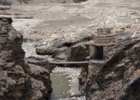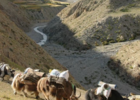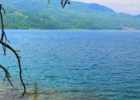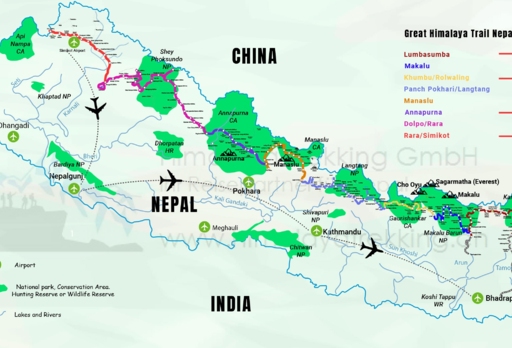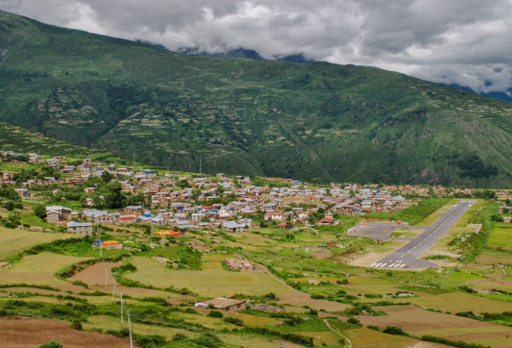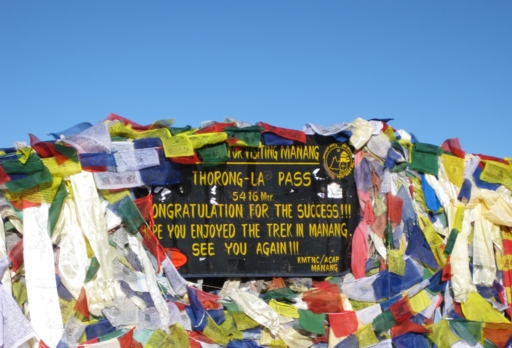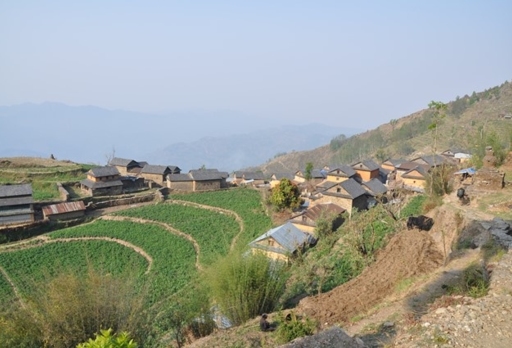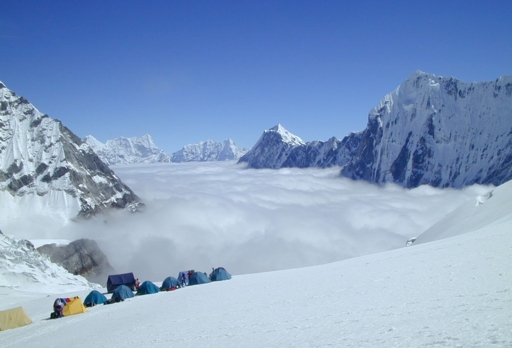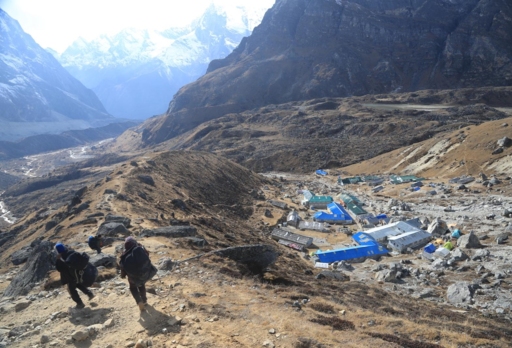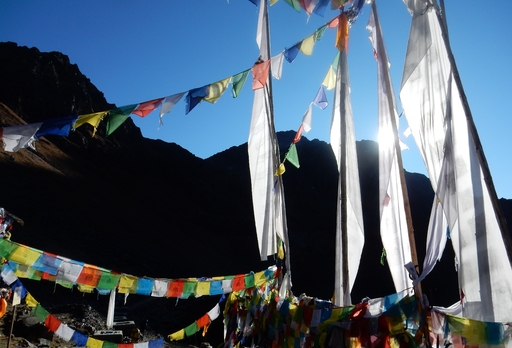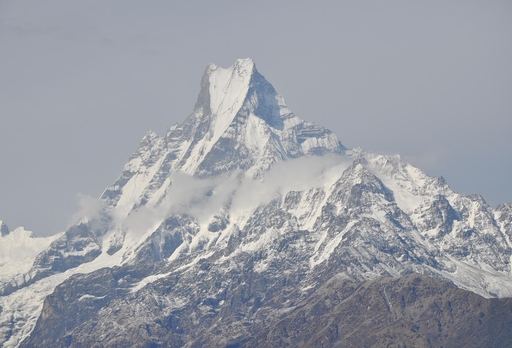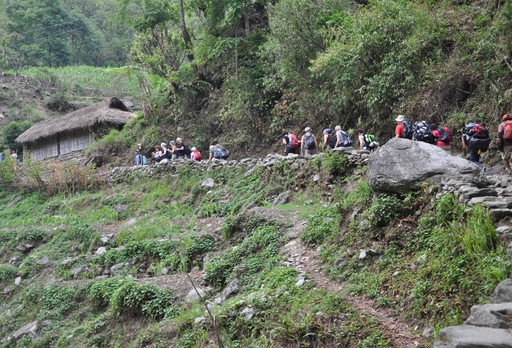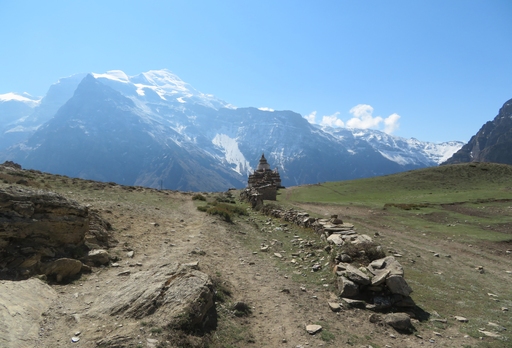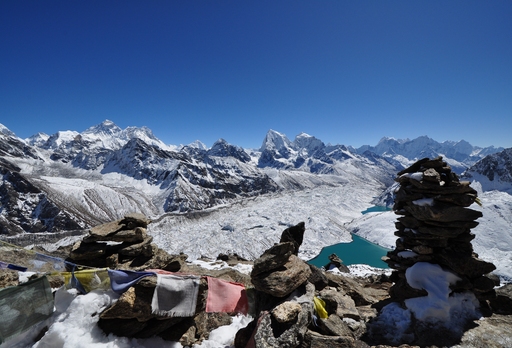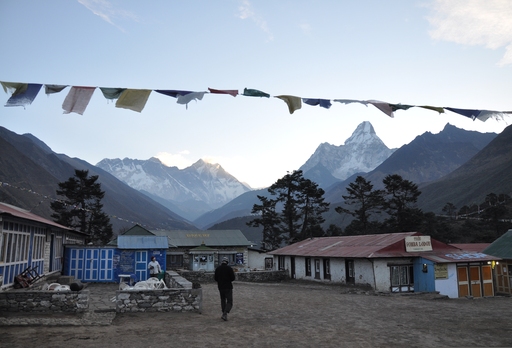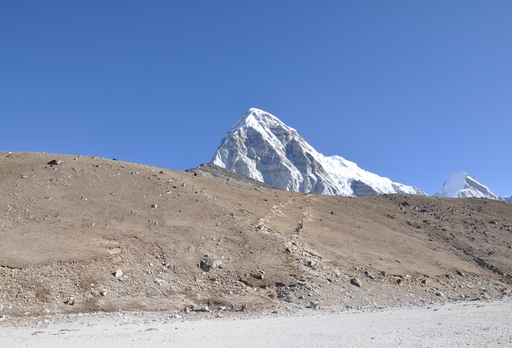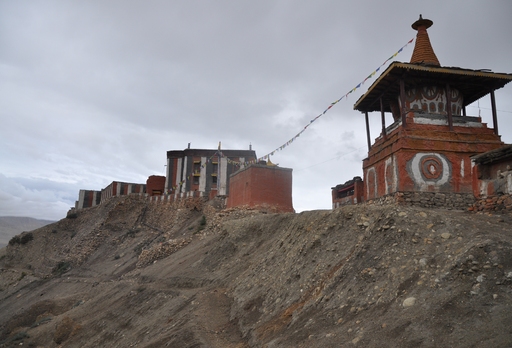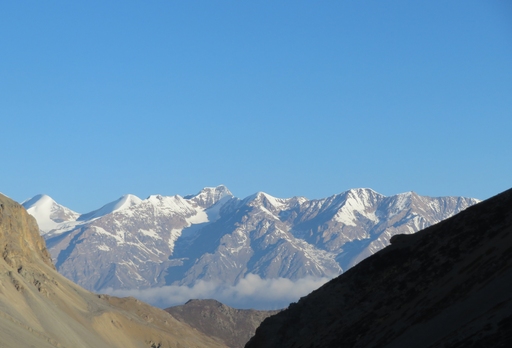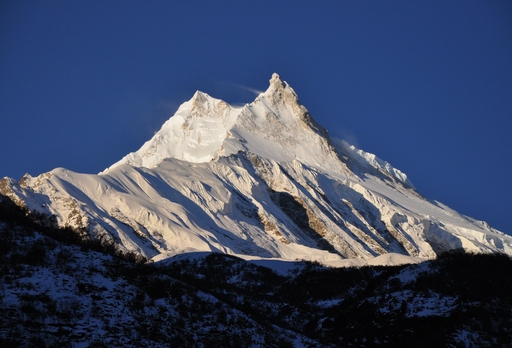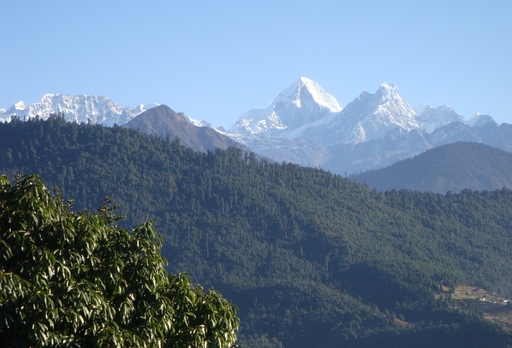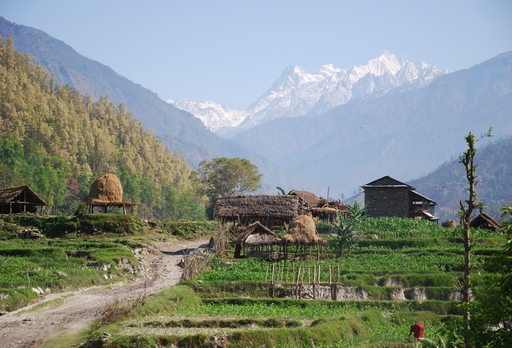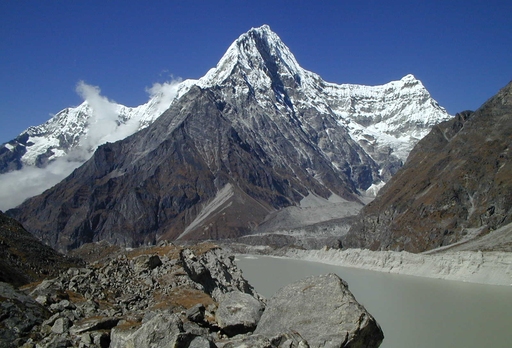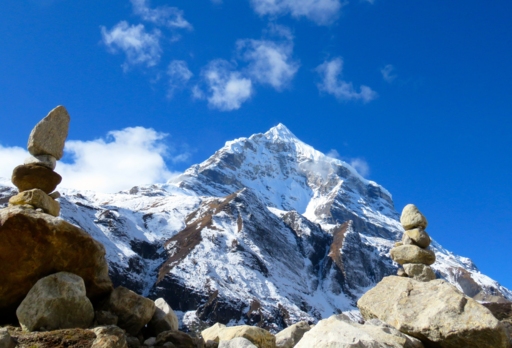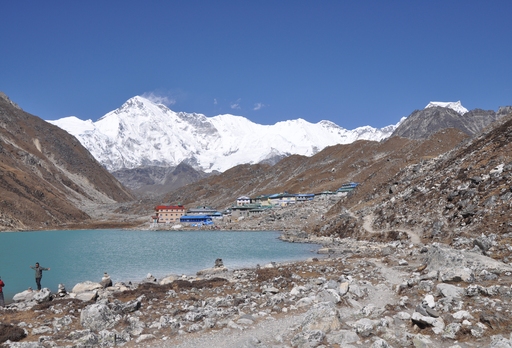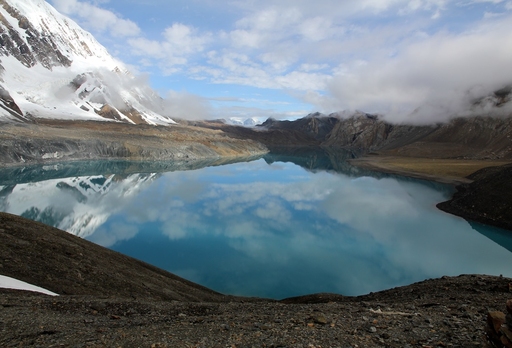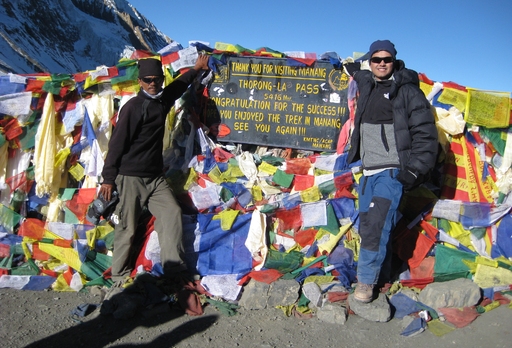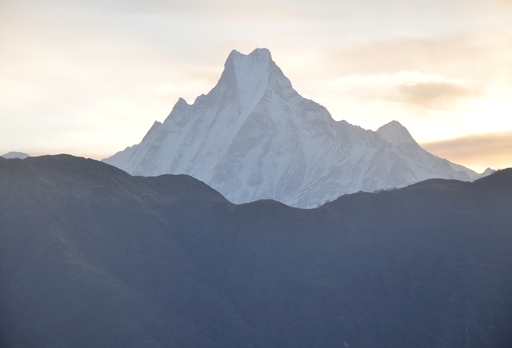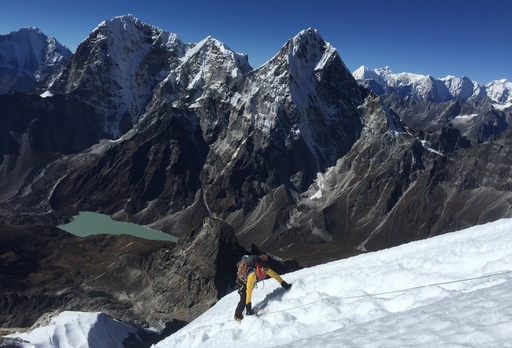Dolpo / Rara Trekking
Hiking from Kagbeni to Rara Lake is a fascinating adventure that takes you through some of Nepal's most breathtaking landscapes. This route is part of the Upper Mustang Trek, a region known for its unique culture and stunning desert landscapes. Shey Gompa, often referred to as the "spiritual heart" of the Dolpo region, is a remote Tibetan Buddhist monastery renowned for its spiritual significance and isolated beauty. To hike from Kagbeni to Shey Gompa, you need a special permit as this area is part of a restricted region. The trek is challenging and takes you through remote areas, so it is important to be well-prepared and ideally engage an experienced guide. The route takes you through the heart of the former Kingdom of Mustang, with its fascinating monasteries and cave dwellings that are set into the cliff walls.
Rara Lake is the largest freshwater lake in Nepal and is in the remote northwest of the country, in the Mugu District. It is the main attraction of Rara National Park, which was established in 1976 to protect the unique flora and fauna of the region. The lake is situated at an altitude of about 2,990 meters above sea level and covers an area of nearly 10.8 square kilometers. The region around Rara Lake is known for its extraordinary natural beauty, tranquil atmosphere, and rich biodiversity. Visitors can observe a variety of birds, including rare species such as the Himalayan Monal pheasant, as well as various mammals like the Red Panda and the Himalayan Tahr.
The hike is not only a physical challenge but also a journey into another world, where time seems to stand still, and Buddhist culture is deeply rooted. The landscape varies from steep rocky gorges to wide dry plateaus reminiscent of the Tibetan plateau. Along the way, you can gain rare insights into the lifestyle of the local population and enjoy the peace of untouched nature.
1. Day - Arrival in Kathmandu
Transfer from the airport to the hotel and time at your own disposal.2. Day - Sightseeing Kathmandu
3. Day - Flight / Drive to Pokhara
4. Day - Trek to Kagbeni (2850 MASL.)
After ankunft in Jomsom ( Flight / Drive to Jomsom (2750 m.ü.M.)5. Day - Trek to Cave Camp (4300 MASL.)
6. Day - Trek to Ford (Jhyanse) (4195 MASL.)
7. Day - Trek to Jungben Besis lager (5140 MASL.)
8. Day - Day Rest
9. Day - Trek to Nulungsumde Kharka (4990 MASL.)
via Jungben Pass (5550 MASL.) & Niwas Pass (5120 MASL.)10. Day - Trek to Chharka Bhot (4300 MASL.)
11. Day - Trek to Kharka camp (4800 MASL.) via Mo La (5030 MASL.)
12. Day - Trek to Tinjegaon (4110 MASL.)
13. Day - Trek to Shimengaon (3885 MASL.)
14. Day - Trek to Musigaon (4200 MASL.) via Muri La (5030 MASL.)
15. Day - Trek to Tiling (3700 MASL.) via Yangtsher Gompa
16. Day - Trek to Namgung (4360 MASL.)
17. Day - Trek to Shey Gompa (4345 MASL.)
18. Day - Rest day
19. Day Trek to Tata (3920 MASL.)
20. Day - Trek to Pho (4090 MASL.)
21. Day - Trek to Yalmaya Bhot (3660 MASL.)
22. Day - Trek to Dolphu (3310 MASL.) via Jhoripala Pass (4835 MASL.)
23. Day - Extra Day
24. Day - Trek to Mangri (2110 MASL.)
25. Day - Trek to Gamgadhi (2095 MASL.)
Rara Lake Sightseeing26. Day - Flight to Nepalgunj
27. Day - Flight to Kathmandu
28. Day - Day rest in Kathmandu
29. Day - Depature Kathmandu
- Flexible daily routine
The daily routines described must be considered somewhat flexible, as they are adapted to local conditions (weather, new paths, etc.) as well as to your constitution. Your guide will plan and discuss the next day with you in the evening.
Nature Trails / JeepsOn the whole trek, a natural road has been built. However, you rarely encounter vehicles. This is actually an advantage for us, as you can compensate for possible flight delays with a jeep and still achieve the goal.
Include
- 2 nights Hotel in Kathmandu with breakfast
- Pick up and Drop service
- Kathmandu sightseeing
- All Transportation connecting to Trekking
- Flight Kathmandu - Pokhara - Jomsom & Rara - Nepalgunj - Kathmandu
- Meals and Accommodations during the Trek
- Trekking Guide (Kamal Bhatta for Part of GHT 2026)
- Porters
- Trekking permit.
- Satellite Telephone
- Trekking insurance for trekking Crew
- Trekking bag of Himalaya Trekking
Exclude
- International Flight to Kathmandu and back
- Tips
- Meals in Kathmandu
- Aditional Accommodations in Kathmandu
- All drinks
Requirements
You will find the level of difficulty and the type of accommodation of each journey in the program.
Equipment
You are going to get an equipment list as recommendation together with your travel documents. The equipment for a tent trekking (tent, mattresses etc.) will be organized locally.
Luggage
You are allowed to check in 20 kg as well as you can take 5 kg of hand luggage with you. If you would like to travel with a trolley case, we kindly ask you to take an additional big backpack with you. Luggage which you do not need while trekking can be deposit for free in Kathmandu.
Entry
For the entry to Nepal you need a passport which is valid further than 6 month after your departure date. You will receive your visa upon your arrival at the airport in Kathmandu. You will be told about the visa expenses while booking, since the fee changes from time to time.
Health
Himalaya Trekking suggests seeing your doctor or a tropical doctor as early as possible so you will be informed about current provisions regarding injections. Pharmacy or a doctor will help you regarding your personal trip first aid travel kit.
Group size
Himalaya Trekking guarantees for every tour. We do not have any minimum size for a group, but we do have a maximum of 12 persons per tour.
Tour program
The daily program should be seen as very flexible since we have to consider the local circumstances as well as your physical condition. Your guide will plan with you every evening the next day.
Travel documents
You are going to receive the detailed travel documents with general information as well as your flight tickets 2 to 3 weeks before departure.
Tipping
The tip for the local guides and carrier are not included in the travel costs. It is common to tip them for a good performance.
Accommodation and meals
The overnight stays in Kathmandu and Pokhara will be in a middle class hotel. The restaurants can be chosen individually, as lunch and dinner are not included in the travel costs.
During a lodge trekking the hike will be trough village to village. You will stay overnight in a basic hostel and you are going to have your meals there or in a restaurant on the way. During the camp trekking you are going to stay in one man or two-person tents and all the meals will be provided by private cook.
Insurance
Himalaya Trekking recommends having travel insurance as well as a cancellation protection. We also recommend having a copy of your police with you.
Climate
The weather in Nepal is nice. The summer is together with the monsoon season from June to October, the rest of the year is dry. There is mild climate in the Kathmandu valley, during the summer time around 20-30°C and in the winter time around 0-15°C.
Please consider the climate for your travelling plans, since the county covers a height form 75 MASL to 8848 MASL. Therefor the climate changes and if you are in the wrong place to the wrong time you will probably not see the Himalaya. However there still is a suited journey for every time period!
Kontinent : AsienLandesgrenze : Im Norden: Himalaya (Tibet /China), Im Süden, Osten und Westen: Indien Lage : 26°20'- 20°26' Längengrad
80°03'- 88°26' BreitengradEinwohner : ca.29 Millionen Hauptstadt : Kathmandu (1350 M. ü. M) ca. 4 Millionen Einwohner Höchster Punkt : 8848 M. ü. M. (Mount Everest) Tiefster Punkt : 75 M. ü. M. (Terai) Baumgrenze : ca. 4500 M. ü. M. Schneegrenze : ca. 2500 M. ü. M. im Winter Himalaya (Berge) : 15% des Landes über 3000 M. ü. M. Hügelland : 68% des Landes 500 M. ü. M. - 3000 M. ü. M. Terai(Flachland) : 17% des Landes unter 500 M. ü. M. Tiere : Tiger, Nashorn, Elefant, Panda, Schneeleopard, Kuh, Yak, Wasserbüffel, 800 verschiedene Vogelarten, je nach Höhe Religionen
: Hindu 85%
Buddhisten 10%
Moslem 3%
Sonstige 2%Kasten : Brahmanen
Tschetri
Baishja
Sudra (Unberührbare)
61 verschiedene VolksgruppenSprache : Nationalsprache ist Nepali
Über 70 weitere lokale Dialekte und Sprachen
Englisch ist obligatorisch in der SchuleAnbau : Reis , Hirse, Buchweizen, Weizen, Kartoffeln,
Bananen, Mango, Ananas, Äpfel und viele andere Früchte und Gemüse je nach Temperatur und HöheTextil : Pashmina und Wollproduktion aus Yak Wolle Haupteinkommen : Agrar-Wirtschaft, Tourismus und Auslandarbeit. 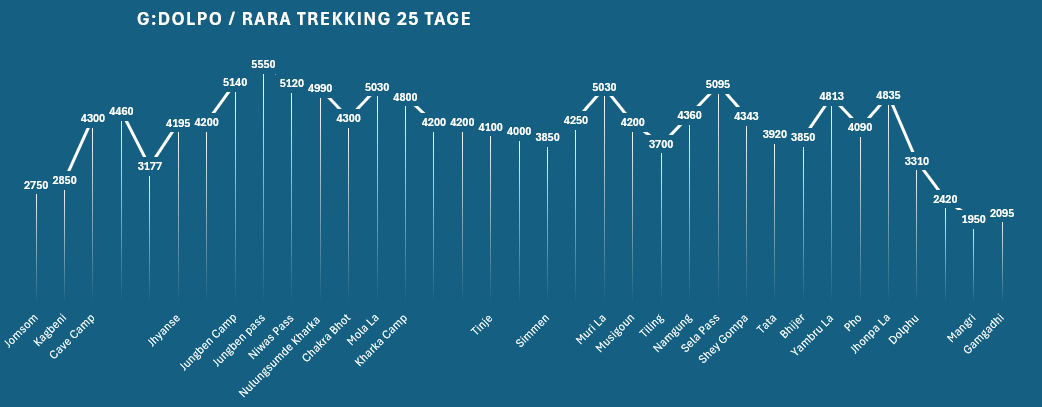
- Individual date request
Departure Date Vacant Places Days Price per Person 18 April 2025 10 27 CHF 6'570.00 Inquiry 25 April 2026 9 27 CHF 6'570.00 Inquiry
Inquiry

